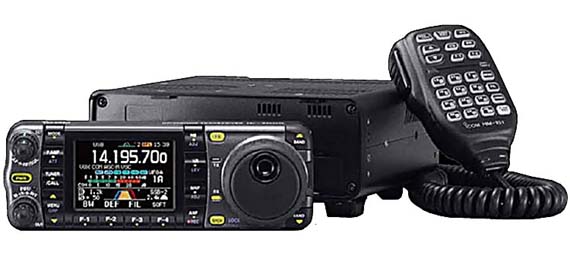Mobile operating
Amateurs planning long trips, or who have long commutes often install radio equipment in their vehicles. This has been made easier in recent years with the development of compact mobile transceivers that cover all commonly used HF/VHF and UHF amateur bands. Mobile VHF/UHF operation via repeaters is most popular. However international and interstate contacts are an everyday reality for the HF mobile operator. The secret tosuccess is antenna system efficiency - especially critical on the lower HF bands.
As well as operating from their own vehicles, Australian amateurs also operate from trains, trams and buses. Use is made of the 144, 432 and 1296 MHz bands for this purpose. Most contacts are via terrestrial repeaters, but communication has also been achieved via amateur satellites. Here are some Hints on antennas and techniques.
On HF the standard mobile whip in the 70s and 80s was usually a centre loaded type, about 1.6 to 1.9 metres long, with a loading coil about half way up. The impedance of such whips is always quite low so there are serious impedance matching issues to overcome as well as the tuning of the loaded antenna to resonance. The location of the whip on a car body was also a significant factor.
Various manufacturers still make substantial looking whips such as the Texas Bug catcher and the more sleek whip series from Hustler, which have survived the test of time.
Helical whips are also popular whether home made or commercial versions such as those from Mark Helicals in the US, or Mobile One in Australia. The WA based Terlin company has been successful world wide with their Outbacker and other models, which are a tapped adjustable helical. These are used by outback HF users throughout Australia and the amateur version is a development of the commercial whip.
Next: Fox hunting, or radio direction finding

